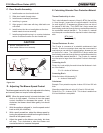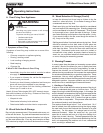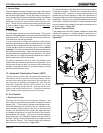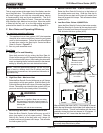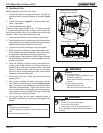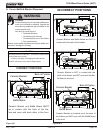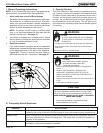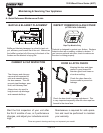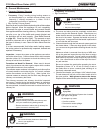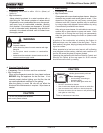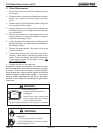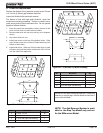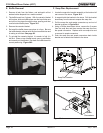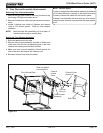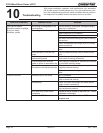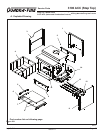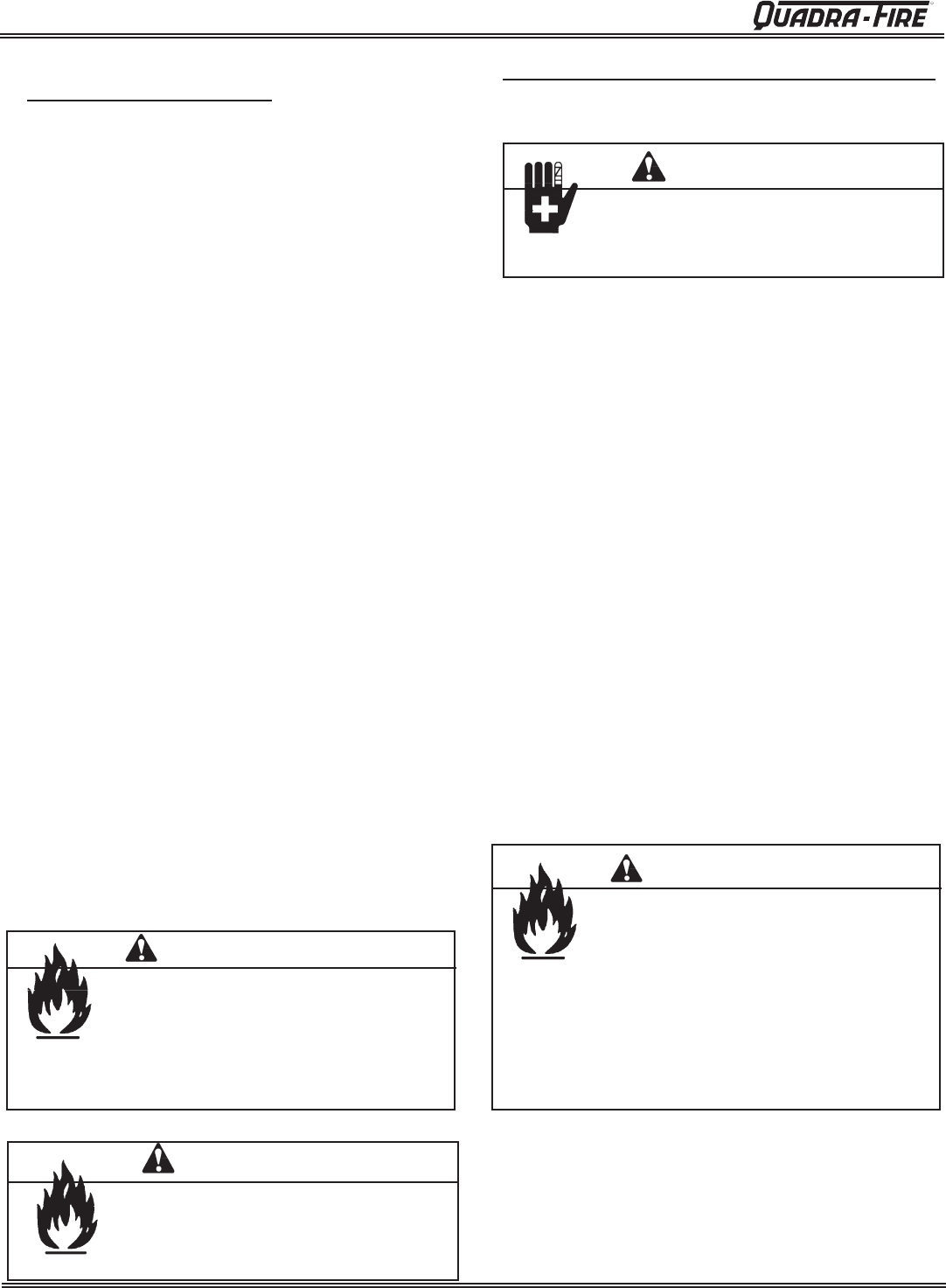
Page 32
7033-277I
July 7, 2011
R
3100 Wood Stove Series (ACC)
B. General Maintenance
Inspection: Inspect the system at the appliance connection
and at the chimney top. Cooler surfaces tend to build creosote
deposits quicker, so it is important to check the chimney from
the top as well as from the bottom.
Formation and Need For Removal: When wood is burned
slowly, it produces tar and other organic vapors which combine
with expelled moisture to form creosote.
The creosote vapors condense in the relatively cool chimney fl ue
of a newly-started or a slow-burning fi re. As a result, creosote
residue accumulates on the fl ue lining. When ignited, this
creosote creates an extremely hot fi re which may damage the
chimney or even destroy the house.
The chimney connector and chimney should be inspected
once every 2 months during the heating season to determine
if a creosote or soot buildup has occurred. If creosote or soot
has accumulated, it should be removed to reduce the risk of a
chimney fi re.
1. Creosote (Chimney) Cleaning
• Frequency: Every 2 months during heating season or
as recommended by a certifi ed chimney sweep; more
frequently if chimney exceeds or is under 14-16 ft.
(measured from bottom of appliance)
• By: Certified Chimney Sweep
Remove all ash from the fi rebox and extinguish all hot embers
before disposal. Allow the appliance to cool completely.
Disconnect fl ue pipe or remove baffl e and ceramic blanket
from appliance before cleaning chimney. Otherwise residue
can pile up on top of the baffl e and ceramic blanket and
the appliance will not work properly. (See Baffl e Removal
on page 36). Close the door tightly. The creosote or soot
should be removed with a brush specifi cally designed for
the type of chimney in use. Clean out fallen ashes from the
fi rebox.
It is also recommended that before each heating season
the entire system be professionally inspected, cleaned and
repaired if necessary.
a. The stove and ashes must be completely cooled down
before using the Ash Removal System. Reach down and
locate the ash removal door handle under the left side of
the stove in the center. Squeeze the handle and push all
the way back. A magnet will hold the handle in place which
in turn holds the ash door open.
b. Clean ash down through the ash removal system grate into
the drawer below. If there are large pieces in the ashes,
you can remove the grate before brushing the ash into the
drawer.
Make sure all ash is removed from the top of ARS door.
Lift up the grate and inspect the top of the door to ensure
all ash has been removed. You can rapidly move the ARS
latch handle up and down to help remove any ash from the
door. Use a small brush to clean off the top of the door if
any ash remains.
Be sure to replace the grate before operating the stove.
Remember to leave 1/4 to 1/2 inch (6-13mm) of ash on
the fi rebox fl oor to act as a natural grate, allowing air to
fl ow freely underneath wood.
c. Close the door handle, you will hear a “click” when it closes.
The ash drawer will not pull out if the door handle is left in
the open position. Wear gloves to remove the drawer.
Dispose of the ashes following the directions on page 33.
Fire Risk.
• Do not use chimney cleaners or fl ame colo-
rants in your appliance.
Will corrode pipe.
WARNING
Fire Risk.
Prevent creosote buildup.
WARNING
• Inspect chimney connector and chimney once
every two months during heating season.
• Remove creosote to reduce risk of chimney fi re.
• Ignited creosote is extremely HOT.
2. Ash Removal System (ARS) Operating and Cleaning
• Frequency: As necessary
• By: Homeowner
• Gloves recommended
• May have sharp edges
CAUTION
Injury Risk.
Fire Risk
Injury Risk
WARNING
Make sure Ash Removal System door is sealed
tight against the gasket.
Air leakage may cause:
• Over-fi re condition.
• Flame and/or smoke spillage.
• Wood to burn too fast.



